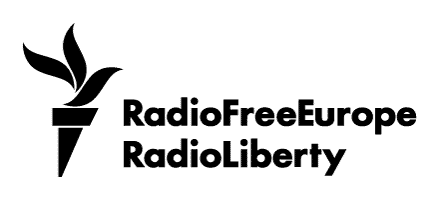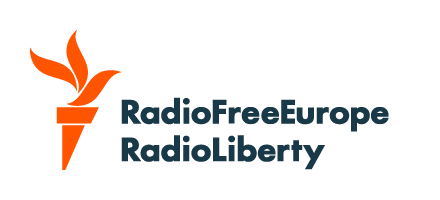Welcome back to The Farda Briefing, an RFE/RL newsletter that tracks the key issues in Iran and explains why they matter.
I'm RFE/RL correspondent Kian Sharifi. In this edition, I explore the surprising -- and brief -- reactivation of the tracking systems on Iran’s “shadow fleet” of oil tankers after years of staying in the shadows.
What You Need To Know
• Trackers On, Trackers Off: For the first time since 2018, dozens of Iranian oil tankers linked to the country’s sanctioned exports briefly activated their tracking systems on October 13 before many went dark again. Analysts are divided on whether the move was a calculated show of defiance, while in Iran some have hinted at possible “sabotage.”
• More Women Shun The Hijab: A growing number of women and girls, particularly in the capital Tehran, have stopped covering their head in public, in direct defiance of the country’s clerical rulers. Several women have spoken to RFE/RL’s Radio Farda about how Iran’s streets are “transformed” following the nationwide protests in 2022 that gave rise to the “Women, Life, Freedom” movement.
• French Pair Handed Heavy Sentences: An Iranian court this week sentenced two French citizens to lengthy prison terms for allegedly spying for France and Israel. French state-owned broadcaster France 24 identified the pair as Cecile Kohler and her partner Jacques Paris. Speaking to Radio Farda, French-Iranian academic Fariba Adelkhah, who also served time in Iran, criticized the judicial system and said, “We’re all spies unless proven otherwise.”
The Big Issue
Daring The West Or Internal Power Play?
Much of Iran’s oil fleet briefly came out of hiding between October 12 and October 14, according to the monitoring service TankerTrackers.
Nearly 80 percent of Iranian‑flagged tankers activated their AIS (Automatic Identification System) transponders, broadcasting real locations rather than spoofed or blank signals.
Analysts were quick to note the timing, with many speculating that it was a coordinated move meant to dare the West, particularly the United States, in the wake of fresh US sanctions and return of UN embargoes.
The Iranian website Energy Press, citing an “informed source,” described the AIS activation as a “major sabotage” carried out “by the enemies of the government.”
Yet the reveal didn’t last. By October 15, TankerTrackers reported that two‑thirds of the Iranian fleet had gone silent again, cutting transmissions or reverting to spoofed coordinates around Southeast Asia and the Gulf of Oman. By October 16, only a sixth of the tankers had kept their tracking systems online.
Why It Matters: The move coincided with the reimposition of UN sanctions initiated by Britain, France, and Germany through the “snapback” mechanism and new US Treasury actions targeting dozens of ships and companies.
This is why some observers described the AIS activation as an act of defiance, which was welcomed by pro-Islamic republic voices on social media.
As part of its “maximum pressure” policy against Iran, US President Donald Trump's administration has made it a priority to drive down Tehran’s oil exports.
Iran’s economy is heavily reliant on oil revenues, and it has used its “shadow fleet” of tankers to evade sanctions and covertly transport oil to China -- by far its top buyer -- and other destinations.
Tehran uses a combination of ship-to-ship transfers, middlemen, covert financial dealings, and rebranding of oil shipments to hide their Iranian origin and make the oil appear to be from other countries. These tactics enable the Islamic republic to continue exporting oil and generating revenue despite sanctions aimed at blocking its petroleum trade.
The US Energy Information Administration (EIA) estimated Iran's crude oil and condensate export revenues at about $43 billion for 2024, up $1 billion from the previous year.
What's Being Said: There has been no official comment from Tehran on why its “shadow fleet” went online for the first time in seven and a half years.
Mahmud Khaqani, a former director at the Iranian Oil Ministry, said one possibility is that critics of the reformist government had a part to play.
“[They] may be seeking to create a new crisis by provoking the United States and its allies into tracking or seizing Iranian tankers,” he suggested in an interview with local media.
Another possibility, Khaqani proposed, is that “concealing tanker routes is no longer feasible” due to the unprecedented glut in the global oil market.
Abdollah Babakhani, an energy analyst in Iran, offered a more optimistic take on the development.
“Such a move could either mark the beginning of a limited return to maritime transparency or signal behind-the-scenes negotiations over the security of energy routes in the Persian Gulf,” he wrote.
Expert Opinion: Farzin Nadimi, a senior fellow at The Washington Institute, suggested that if the AIS activation was deliberate, it signals that the Islamic republic may be “challenging those who are thinking about stopping their tankers to a face-off: they can reciprocate at the Strait of Hormuz.”
Hard-line figures in Tehran have long threatened to close the vital energy chokepoint if Iran is pushed into a corner.
Sina Toosi, a senior fellow at the Center for International Policy in Washington, DC, speculated on X that “Iran at this point may very well welcome a clash that drives up oil prices & inflicts a political cost on Trump.”
That's all from me for now.
Until next time,
Kian Sharifi
If you enjoyed this briefing and don't want to miss the next edition, subscribe here. It will be sent to your inbox every Friday.







